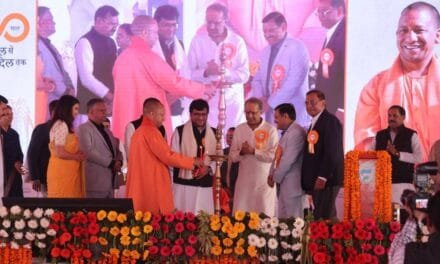The food processing industry has numerous sectors, each having its own members association. Over time, these associations delivered minimal utility for the processors. Routinely they were airing in the public forum about the great opportunity for this sector. In a way, they were only making a case for the government, that this is a sector where processing is only 2% and thus holds a great promise. Rajat K. Baisya believes the industry needs a concerted effort in that direction for which we need a new association.
The food processing industry has numerous sectors, each having its own members association. Some of them are in existence for several decades, even since pre-independence days. Their numbers are more than two dozens. For example, we have AIFPA for fruits & vegetable processors, the Indian Dairy Association, Bakers Association, Marine Products Manufacturers and Exporters Association, etc., dealing with their own issues. And all these sectors have their constraints to deliver performance. Some of these sectors hold big promise, but they are not performing well.
Indian agriculture, horticulture, and processed food export stand at about 2.5% of global agri-trade. It was 1.5% in the 70s, and as such in 5 decades, growth is only 1%. Value addition is also said to be around 9% which was about 4% five decades ago. In some of the sectors like F&V, value addition was even lower. The reason for low-value addition here is, that a large part is consumed fresh. And processing is minuscule to 7%, however, up from about 2% in the 80s. Again here, for some of the sectors, the processing is still lower. Even this is the result of significant impetus given by subsequent governments in power since 1988, when a separate ministry for Food Processing was established.
A large part (about 80%) of food processing is in unorganized sector with no scale and is limited by resources and access to the market. Ministry of MSME has been trying to group them together, help them get critical mass, and provide training to adopt modern management practices. These initiatives have delivered a limited result which is evident. During the pandemic, many of these in MSME collapsed due to cash flow problems.
All these manufacturers’ associations have their own activities, and some of them, like the Indian Dairy Association and Marine Products Exporters Associations, are pretty active. They hold their functions in grand style. And others have their own programs within the limited resources that they have. An association like AIFPA is resource-starved and will invariably look for the support of the food processing ministry for even holding a small conference. Earlier, they had some old stalwarts managing the association with all devotion to duty and involvement. In the course of time, these associations have very limited utility for the processors, largely due to their own making. Routinely they were airing in the public forum about the great opportunity for this sector, giving a long list of agri and horticultural crops where India stands tall in terms of production. Therefore, they were only making a case for the government, that this is a sector where processing is only 2% and thus holds a great promise. And all that they were asking from the government was to reduce taxes. This continued for decades.
Subodh Kant Sahay, the Food Processing Minister during the UPA regime, used to attend all programs of AIFPA. In the 5th year of his tenure, he said in the AGM of AIFPA that he had met the then Prime Minister Dr Monmohan Singh two days earlier for budget discussion, and he asked him, “this year, what tax do you want the govt to reduce for your pickles and chutney sector.” Subodh Kant Sahay was a friendly kind of person. In a lighter vein, he further said that “I have pursued your case every year as you wanted me to do, tax now is almost zero (pre GST days), but you don’t report any growth of this sector, which frustrates me, and I don’t know what to do.” This answers the problem of the sector. Although Subodh Kant Sahai said this sarcastically, he moved to the Ministry of Tourism the next year. Till date, I receive festival greetings from him, may be like many others from the industry. He released my book ‘Changing Face of Processed Food Industry in India.’
Farmers did an excellent job in the agro-processing sector, and they delivered growth even in difficult times. The industry did its best individually within constraints, but not collectively. The government only talked about big potential, played around tax and administrative measures, and spent money that did not deliver anything significant, as they were guided by industry associations that have not played their role the way they should have been. And the result is evident.
We have both sector-specific issues as well as general problems impacting all sectors. Industry individually tried to solve its problems to survive. Association meetings were for fun and frolic, mostly ends by only passing routine admin matters like following up with defaulters to pay membership fees. Collectively industry association like AIFPA does nothing except routinely writing to Govt to reduce tax during financial year review and budget discussions.
Earlier, they canvassed for facing difficulty for multiple tax regimes, but GST has clubbed them, and now they pitch to reduce GST and make it nil. Earlier, multiple regulatory agencies controlled the industry, and the association demanded a single regulatory authority, and they got FSSAI managed by bureaucrats. But problems are still chasing the industry.
Earlier, we used to discuss food safety issues once in AGM and conferences, and now we have every day webinars happening on Food Safety. And the same set of people are doing rounds in all such programs discussing food safety issues. Although this is good to raise awareness and importance about food safety, but industry is not seen in those programs. Has food adulteration reduced and conformance improved? Besides, every day there will be some webinars on various kinds of opportunities in the food processing sector. In the northeast region, it has become a routine. I plan to undertake a visit to survey to understand what is really happening. If there is so much opportunity, why is there no growth? The processing industry reports 9-10% growth mainly driven by the organised sector, which is self-propelled cash-rich companies. They are 20% in terms of numbers but 80% in terms of output and market share.
In developed countries, the agricultural sector is totally mechanised. In the USA only 2% of the total workforce are engaged in agriculture, whereas in India we still have over 50%, down from 75% three decades ago. Our agriculture is very low in terms of productivity, which impacts the cost of production, which is part of the reason for the higher cost. Their cost of production is also high. In the countries, where the food processing industry is highly developed, you will find fresh is costing more than processed. In India, fresh is easily available and invariably lower in cost than processed. As Indian produce is not cost-competitive, we are not growing in global trade.
We are number one in milk production, but we cannot export SMP without government subsidies which means that we cannot pass on our cost to the potential buyer in the international market. It is true for all other sectors as well.
The key issue of our food processing sector for not performing well is our cost. We are not cost-competitive. And the reason is that our productivity is low at all levels. The processing scale is low, and technology adoption is low in all sectors except dairy, marine, meat processing, bakery, confectionary, etc. Infrastructure is still poor although improving. The industry 4.0 environment is expected to change the manufacturing productivity with the application of AI, Robotics, Blockchain Technology, IoT, etc.
In comparison, developed countries have large processing units set up in growing areas which is a lot more cost-effective for processing seasonal crops. But our processing units are located far away from the growing centres and cold chains and warehousing making them costlier to store bulk raw materials. This cold chain should have been integrated with the processors. For setting up cold chain Govt gives 50% subsidy, taking that advantage, many have set up the cold chain to be utilised by processors as well as by farmers to store their excess produce. MSME has limited use of these facilities, so they source from middlemen making it even costlier.
To address all these issues responsible for improving our competitiveness, we need industry efforts through a unified association that reflects all sectors that are not there right now. The development effort has to be directed by industry. The association has to offer both sectoral services to improve category performance where all members in that sector benefit, including individual industry members, by providing solutions to specific industry problems working under a specific brief and agreement. In many countries, such efforts are also supported by the government. For example, in a small country with only a 5 million population, Denmark has exhibited manufacturing excellence, and industries have set up operations in many other countries, including India. In Denmark, they have private industries supported by public enterprises and the government for making industries globally competitive by achieving manufacturing excellence.
It is known as MODE-Manufacturing Academy of Denmark. Earlier also, whatever development and growth that we have seen were led by industry individually. But for sectoral growth, we need a unified force to work which can address and find solutions to all problems and issues. Eliyahu Goldratt, the author of the book ‘Goal’, has said that without having any goal, productivity cannot increase. His famous Theory of Constraints (TOC) needs to be applied in the food processing sector and then industry-specific constraints to be removed. Many large organisations like Godrej, Aditya Birla Group, Dabur, and many others have gained by applying TOC in their business functions to eliminate constraints to have a significant gain in productivity. Even 1% constraints can hold up 99% performance. We need a concerted effort in that direction for which we need a new association. This new association will catalyse the creation of industry-led development activities to improve productivity, technology absorption, and competitiveness.
Author is the chairman of Strategic Consulting Group and served as Professor and Head of the Department of Management Studies, IIT Delhi. His research areas are marketing, strategy, project management and international business and he is an internationally well known consultant in these areas. Prof Baisya is also the president of Project & Technology Management Foundation and can be contacted at rkbaisya@ hotmail.com
















